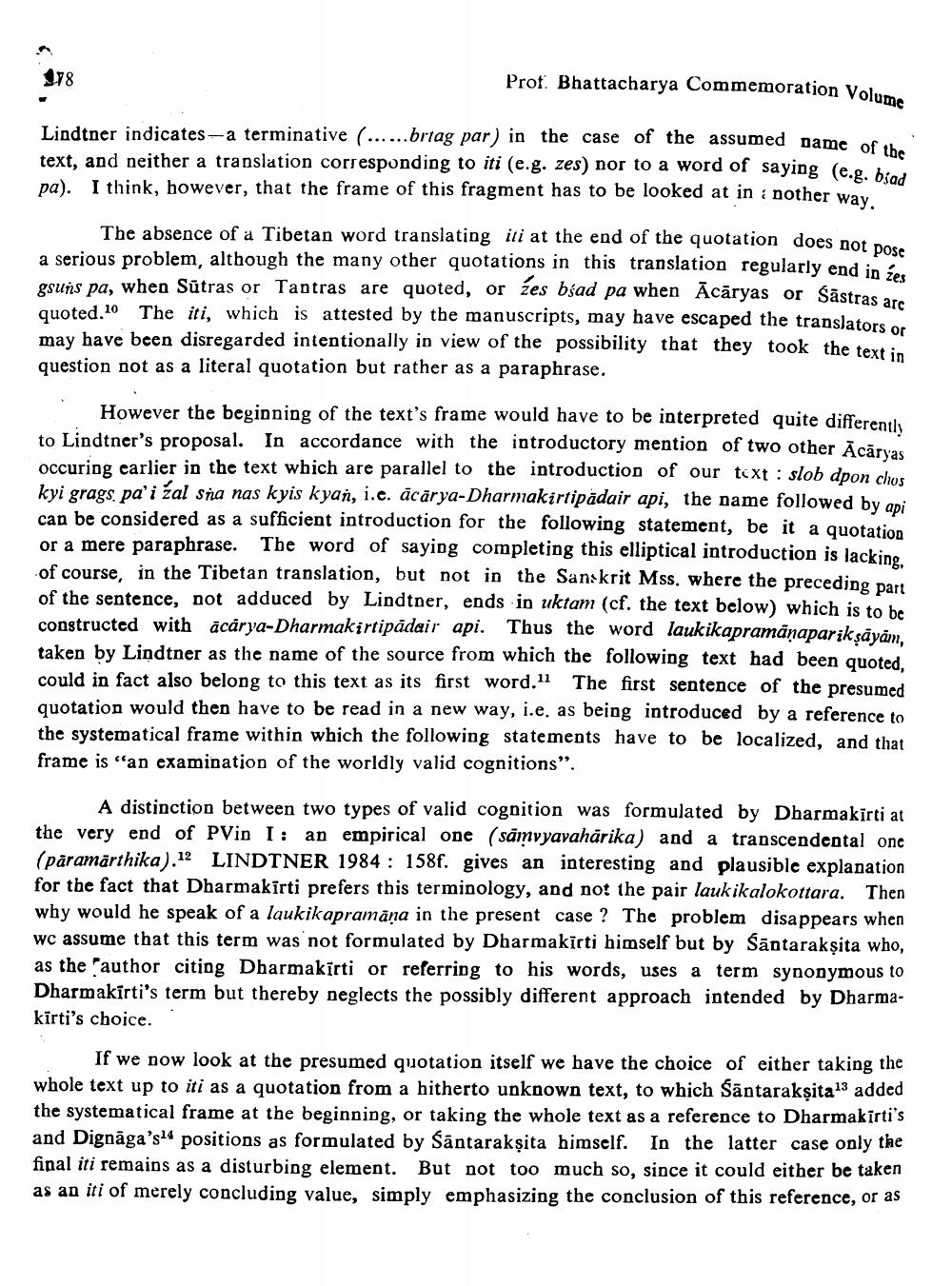Book Title: Apropos Of Lindtners Two New Works Of Dharmakirti Author(s): Ernat Steinkellner Publisher: Ernat Steinkellner View full book textPage 2
________________ $78 Prot. Bhattacharya Commemoration Vol. Lindtner indicates-a terminative (......brtag par) in the case of the assumed name of the text, and neither a translation corresponding to iti (e.g. zes) nor to a word of saying (e.e hi pa). I think, however, that the frame of this fragment has to be looked at in another way The absence of a Tibetan word translating iti at the end of the quotation does not pos a serious problem, although the many other quotations in this translation regularly end in gsuns pa, when Sūtras or Tantras are quoted, or zes bśad pa when Ācāryas or Šāstras ar quoted. 10 The iti, which is attested by the manuscripts, may have escaped the translators may have been disregarded intentionally in view of the possibility that they took the text in question not as a literal quotation but rather as a paraphrase. However the beginning of the text's frame would have to be interpreted quite differenth to Lindtner's proposal. In accordance with the introductory mention of two other Ācāryas occuring earlier in the text which are parallel to the introduction of our text : slob dponchos kyi grags. pa'i žal sna nas kyis kyan, i.e. ācārya-Dharmakirtipādair api, the name followed by api can be considered as a sufficient introduction for the following statement, be it a quotation or a mere paraphrase. The word of saying completing this elliptical introduction is lacking of course in the Tibetan translation, but not in the Sanskrit Mss. where the preceding part of the sentence, not adduced by Lindtner, ends in uktam (cf. the text below) which is to be constructed with acårya-Dharmakirtipădair api. Thus the word laukikapramanaparik sāyām. taken by Lindtner as the name of the source from which the following text had been quoted, could in fact also belong to this text as its first word." The first sentence of the presumed quotation would then have to be read in a new way, i.e. as being introduced by a reference to the systematical frame within which the following statements have to be localized, and that frame is an examination of the worldly valid cognitions". A distinction between two types of valid cognition was formulated by Dharmakirti at the very end of PVin I: an empirical one (samvyavahărika) and a transcendental onc (paramarthika). 12 LINDTNER 1984 : 158f. gives an interesting and plausible explanation for the fact that Dharmakīrti prefers this terminology, and not the pair laukikalokottara. Then why would he speak of a laukikapramana in the present case? The problem disappears when wc assume that this term was not formulated by Dharmakirti himself but by Santarakṣita who, as the author citing Dharmakīrti or referring to his words, uses a term synonymous to Dharmakirti's term but thereby neglects the possibly different approach intended by Dharmakirti's choice. If we now look at the presumed quotation itself we have the choice of either taking the whole text up to iti as a quotation from a hitherto unknown text, to which śāntarakṣita13 added the systematical frame at the beginning, or taking the whole text as a reference to Dharmakīrti's and Dignāga's14 positions as formulated by Santarakṣita himself. In the latter case only the final iti remains as a disturbing element. But not too much so, since it could either be taken as an iti of merely concluding value, simply emphasizing the conclusion of this reference, or asPage Navigation
1 2 3 4 5 6 7 8 9 10
